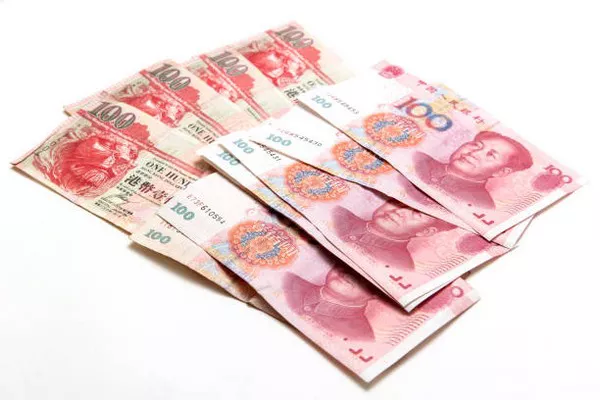The global financial landscape is undergoing significant changes, raising questions about the future of the US dollar’s supremacy as the world’s reserve currency. One contender often mentioned in this debate is the Chinese yuan (also known as the renminbi, RMB). The possibility of the yuan replacing the dollar has profound implications for international trade, finance, and geopolitics. This article explores the factors driving the yuan’s rise, the challenges it faces, and the likelihood of it supplanting the dollar as the global reserve currency.
The Current Dominance of the US Dollar
The US dollar has been the world’s primary reserve currency since the Bretton Woods Agreement in 1944. Several factors contribute to the dollar’s dominance:
Economic Might: The United States boasts the world’s largest economy, providing a stable backdrop for its currency.
Financial Markets: US financial markets are the deepest and most liquid globally, offering unparalleled investment opportunities.
Political Stability: Despite occasional turbulence, the US political system is generally perceived as stable.
Military Power: The US military presence around the world supports the geopolitical clout of the dollar.
These factors ensure that the dollar remains the preferred currency for international trade, investment, and central bank reserves. However, recent trends suggest a growing interest in diversifying away from the dollar.
China’s Ambitions and the Rise of the Yuan
China, as the world’s second-largest economy, has been actively promoting the international use of the yuan. The Chinese government has implemented several strategies to increase the yuan’s global footprint:
Bilateral Trade Agreements: China has signed currency swap agreements with numerous countries, allowing them to trade directly in yuan and bypass the dollar.
Financial Market Reforms: Opening up China’s financial markets to foreign investors has increased the yuan’s appeal. Initiatives like the Shanghai-Hong Kong Stock Connect and Bond Connect programs have facilitated this process.
Belt and Road Initiative (BRI): This massive infrastructure project across Asia, Europe, and Africa has bolstered the yuan’s international use, as many contracts and loans are denominated in yuan.
Reserve Currency Status: In 2016, the International Monetary Fund (IMF) included the yuan in its Special Drawing Rights (SDR) basket, a significant step towards recognizing it as a global reserve currency.
Advantages of the Yuan as a Global Reserve Currency
There are several reasons why the yuan could potentially replace the dollar:
Economic Scale: China’s economic size and growth trajectory make the yuan an attractive alternative.
Trade Influence: As the largest trading nation, China’s push for the yuan in trade settlements increases its usage globally.
Diversification: Central banks and investors are increasingly seeking to diversify their reserves and investments to hedge against risks associated with dollar dependence.
Challenges Facing the Yuan
Despite these advantages, the yuan faces significant hurdles in its quest to dethrone the dollar:
Capital Controls: China’s strict capital controls limit the yuan’s convertibility, a critical requirement for a global reserve currency. Until these controls are relaxed, the yuan’s liquidity and accessibility will be restricted.
Political and Economic Transparency: Concerns about China’s political system and economic transparency deter some investors and central banks from fully embracing the yuan.
Legal and Regulatory Framework: The robustness and impartiality of China’s legal and regulatory framework are often questioned, affecting confidence in the yuan.
Geopolitical Tensions: Ongoing geopolitical tensions between China and other major economies, particularly the United States, create uncertainty and risk around the yuan’s future.
The Dollar’s Enduring Strength
Even as the yuan rises, the dollar remains resilient due to several enduring strengths:
Network Effects: The entrenched use of the dollar in global trade and finance creates a self-reinforcing cycle of demand.
Safe-Haven Status: In times of economic or geopolitical uncertainty, investors flock to the dollar, reinforcing its value and stability.
Innovation and Competitiveness: The US continues to lead in innovation and remains a highly competitive economy, attracting global capital.
A Multipolar Currency World
Rather than a complete replacement of the dollar, a more plausible scenario is the emergence of a multipolar currency world, where the yuan, euro, and possibly other currencies play more significant roles alongside the dollar. This transition would involve:
Incremental Changes: The shift towards a multipolar currency system would be gradual, driven by incremental changes in trade practices, investment patterns, and central bank policies.
Regional Influence: Different regions might prefer different currencies based on economic ties and geopolitical alignments. For instance, the yuan could become more dominant in Asia and parts of Africa due to China’s extensive trade and investment activities.
Diversified Reserves: Central banks may increasingly diversify their reserves, holding a mix of currencies, including the yuan, to mitigate risks and take advantage of various economic strengths.
See also What Does It Mean To Float The Chinese Yuan?
Conclusion
The prospect of the Chinese yuan replacing the US dollar as the global reserve currency is a complex and multifaceted issue. While the yuan has made significant strides and offers several advantages, it also faces substantial challenges that hinder its immediate rise to global dominance. The dollar’s entrenched position, supported by deep financial markets, political stability, and economic might, makes it a formidable incumbent.
The most likely future scenario is not a sudden replacement of the dollar but the gradual evolution towards a more multipolar currency system. In this system, the yuan, alongside other major currencies, would play an increasingly prominent role in global finance and trade. Such a transition would reflect the changing dynamics of the global economy and the need for a more balanced and diversified international monetary system.
As China continues to implement reforms and integrate more deeply into the global financial system, the yuan’s international role will undoubtedly expand. However, achieving full reserve currency status comparable to the dollar will require significant changes in China’s economic policies, legal frameworks, and geopolitical strategies. Until then, the dollar’s reign as the world’s primary reserve currency remains secure, albeit with growing competition from the yuan and other emerging currencies.


